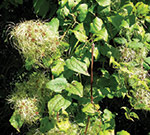 Over the past few decades, old man’s beard (OMB) has rapidly spread to many parts of Tasman, and continues to do so at an alarming rate. OMB has become so widespread that there are now literally billions of seeds released every year in Tasman.
Over the past few decades, old man’s beard (OMB) has rapidly spread to many parts of Tasman, and continues to do so at an alarming rate. OMB has become so widespread that there are now literally billions of seeds released every year in Tasman.
Learn more about this pest plant and the attempts that have been made to control it.
Learn more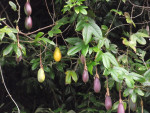 Banana passion vine is a widespread pest vine in Tasman. The fruits of this pest are consumed and the seeds spread far and wide by birds, making it very difficult to control.
Banana passion vine is a widespread pest vine in Tasman. The fruits of this pest are consumed and the seeds spread far and wide by birds, making it very difficult to control.
Like old man’s beard, it spreads rapidly and smothers other vegetation, threatening Significant Natural Areas where it is present.
Learn more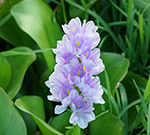 They’re lovely to look at, but Water Hyacinth (Eichornia crassipes) is an aquatic pest weed that we want to keep out of our region.
They’re lovely to look at, but Water Hyacinth (Eichornia crassipes) is an aquatic pest weed that we want to keep out of our region.
We understand that this plant may already be present in the community, so it’s very important that any discoveries are reported so they can be removed and disposed of safely.
Learn more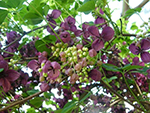 Chocolate vine (Akebia) is listed as a sustained control pest in the Tasman-Nelson Regional Pest Management Plan (RPMP).
Chocolate vine (Akebia) is listed as a sustained control pest in the Tasman-Nelson Regional Pest Management Plan (RPMP).
While it is too widespread to eradicate, the goal is to ensure that infestations don’t cause significant impacts to property and native habitats.
Learn more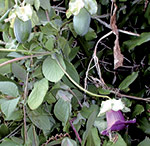 Cathedral Bells (Cobaea scandens) is a fast-growing, evergreen climbing vine that can grow six metres tall and cover trees and shrubs in forests, roadsides, riverbanks, gardens, hedges, shelter belts and open areas.
Cathedral Bells (Cobaea scandens) is a fast-growing, evergreen climbing vine that can grow six metres tall and cover trees and shrubs in forests, roadsides, riverbanks, gardens, hedges, shelter belts and open areas.
It was introduced to New Zealand for its ornamental qualities and was historically planted around homesteads for its attractive bell-like purplish flowers.
Learn more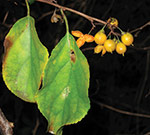 Climbing spindleberry is a deciduous climbing vine, notable for the sharp spines sometimes found on the young shoots. It can grow up to 12 – 15 metres high.
Climbing spindleberry is a deciduous climbing vine, notable for the sharp spines sometimes found on the young shoots. It can grow up to 12 – 15 metres high.
The leaves are round, 5 – 10 cm long, alternate on the stem and have fine teeth on the margins. Climbing spindleberry produces round yellow to orange fruits from late summer to early winter, which are eaten by birds.
Learn more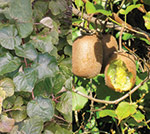 Wild kiwifruit vines are listed as an Eradication Pest Plant in our Tasman-Nelson Regional Pest Management Plan.
Wild kiwifruit vines are listed as an Eradication Pest Plant in our Tasman-Nelson Regional Pest Management Plan.
Kiwifruit can be spread into forests by birds carrying seeds from unmanaged or abandoned orchards, or wild (self-propagated) vines. Vines can smother native trees and shrubs and degrade plantation forests.
Learn more
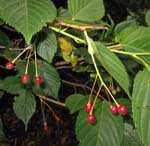 Taiwan cherry (Prunus campanulata) is a deciduous species of cherry tree native to Taiwan. It is a small-sized tree, up to 10 m high, with alternate, thin green leaves that are 5-17 cm long, with sharply-toothed margins.
Taiwan cherry (Prunus campanulata) is a deciduous species of cherry tree native to Taiwan. It is a small-sized tree, up to 10 m high, with alternate, thin green leaves that are 5-17 cm long, with sharply-toothed margins.
Taiwan cherry is a relative newcomer to the Tasman-Nelson region, with the first trees being brought here during the mid-1960s. It has since been widely grown as an amenity tree and its popularity has increased markedly over the past 20 years
Learn more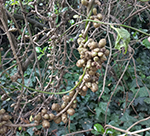 Madeira vine (Anredera cordifolia) AKA the mignonette vine, is an attractive, hairless, woody climbing vine, with fleshy, succulent heart-shaped leaves, arranged alternately on the stem.
Madeira vine (Anredera cordifolia) AKA the mignonette vine, is an attractive, hairless, woody climbing vine, with fleshy, succulent heart-shaped leaves, arranged alternately on the stem.
It’s also an eradication species under the Tasman Nelson Regional Pest Management Plan.
A vine to get rid of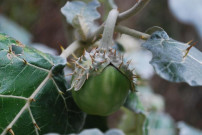 White-edged nightshade (Solanum marginatum) is native to North Africa. This perennial shrub is listed as a progressive containment pest species in our region due to its potential to inhabit pastureland, forest margins and coastal areas.
White-edged nightshade (Solanum marginatum) is native to North Africa. This perennial shrub is listed as a progressive containment pest species in our region due to its potential to inhabit pastureland, forest margins and coastal areas.
It has spiky white stems and oak-shaped leaves with white edges, green uppers and white undersides.
Help us pick out this prickly pest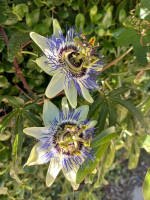 Blue Passion Flower (Passiflora caerulea) is a climbing vine with 5 – 7 lobes on each thin mature leaf. It produces attractive white and purple hanging flowers 6 – 9 cm in diameter, from December to April. These are followed by round, inedible fruits, 3 – 5 cm in diameter, green ripening to yellow orange.
Blue Passion Flower (Passiflora caerulea) is a climbing vine with 5 – 7 lobes on each thin mature leaf. It produces attractive white and purple hanging flowers 6 – 9 cm in diameter, from December to April. These are followed by round, inedible fruits, 3 – 5 cm in diameter, green ripening to yellow orange.
Learn more
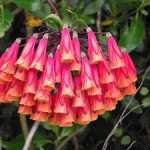 This climbing vine produces attractive red and yellow clustered flowers but is a significant pest plant. A fast-growing ornamental garden escapee, it invades along stream edges and riverbanks, shrublands, forest edges, forest remnants and intact low canopy forest.
This climbing vine produces attractive red and yellow clustered flowers but is a significant pest plant. A fast-growing ornamental garden escapee, it invades along stream edges and riverbanks, shrublands, forest edges, forest remnants and intact low canopy forest.
Learn more
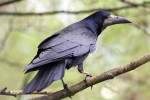
Rooks are a noticeably large glossy black crow-like bird that grows up to 450mm in length. They have a distinctive grey bill with a pale area at the base of the beak. They prey on introduced and native species.
Learn more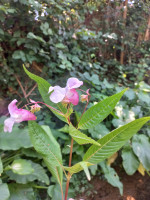 Himalayan balsam
Himalayan balsam Himalayan balsam (Impatiens glandulifera) was once a popular garden plant, but its weedy nature now means it is banned from sale or propagation in Aotearoa New Zealand
A spring-loaded beauty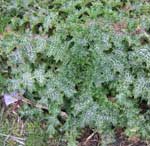 Variegated thistle (Silybum marianum) is a large invasive biennial thistle native to the Mediterranean region, Europe, Central Asia and India. It first made itself at home in New Zealand in 1969.
Variegated thistle (Silybum marianum) is a large invasive biennial thistle native to the Mediterranean region, Europe, Central Asia and India. It first made itself at home in New Zealand in 1969.
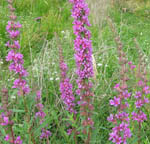 Purple loosestrife (Lythrum salicaria) is an upright perennial herb that can produce up to 50 stems per plant and is a scourge of riparian margins and shallow water areas.
Purple loosestrife (Lythrum salicaria) is an upright perennial herb that can produce up to 50 stems per plant and is a scourge of riparian margins and shallow water areas.
Learn more
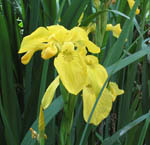 Yellow flag iris (Iris pseudacorus) is an aquatic perennial that grows in swampy ground and along the margins of waterways. . It is listed as a ‘Sustained Control’ species in the Tasman-Nelson Regional Pest Management Plan.
Yellow flag iris (Iris pseudacorus) is an aquatic perennial that grows in swampy ground and along the margins of waterways. . It is listed as a ‘Sustained Control’ species in the Tasman-Nelson Regional Pest Management Plan.
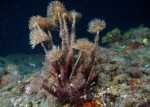 Mediterranean fanworm (Sabella spallanzanii) is a species of marine polychaete that is native to shallow waters in the northeastern Atlantic Ocean and the Mediterranean Sea. First found in Aotearoa in 2010, they are now established in several ports and sites.
Mediterranean fanworm (Sabella spallanzanii) is a species of marine polychaete that is native to shallow waters in the northeastern Atlantic Ocean and the Mediterranean Sea. First found in Aotearoa in 2010, they are now established in several ports and sites.
Yellow bristle grass is listed as a Sustained Control Pest Plant in our Tasman Nelson Regional Pest Management Plan and is found mostly in Golden Bay and the upper Buller catchment.
It is an extremely aggressive annual grass which spreads rapidly through pasture.
Yellow bristle grass – a threat to dairy farms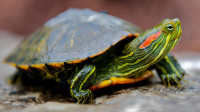 These turtles are considered to be one of the most invasive pest species in the world. Red eared slider turtles have a distinctive red stripe behind each eye, with mature adults weighing around 1kg. They are very well adapted to surviving here.
These turtles are considered to be one of the most invasive pest species in the world. Red eared slider turtles have a distinctive red stripe behind each eye, with mature adults weighing around 1kg. They are very well adapted to surviving here.
Read more about the turtles